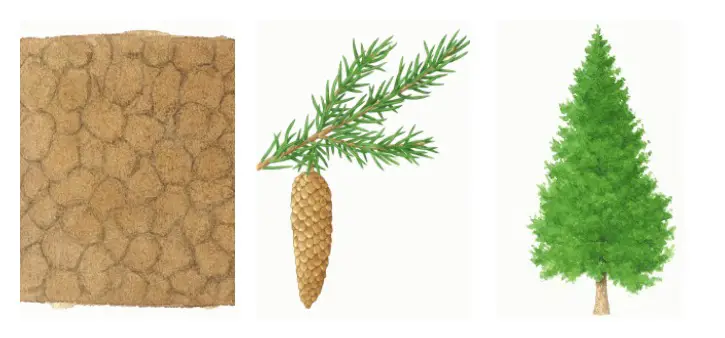Norway spruce
Norway spruce

The Norway spruce - or Picea abies - is probably most recognisable as the traditional Christmas tree found in many of our homes during the festive season.
This tree is a European, but not British, native species. It was widely planted during the early 20th century, but later replaced by the higher yielding Sitka spruce.
Fact and stats
- Lifespan: 200 years
- Height: A conically shaped tree that grows up to 40 metres in height.
- Leaves: Its needles are pointed, mid-green, and stand on tiny pegs.
- Seeds: It has long cylindrical brown cones which hang down.
- Bark: The Norway spruce has smooth, greyish-brown bark with a rusty tint.
- Native to: Throughout Europe - from Norway in the northwest and Poland eastward, throughout the mountains of central Europe, southwest to the western end of the Alps, and southeast to the Carpathians, Balkans and extreme north of Greece.
- Uses: The Norway spruce’s tough and elastic timber, known as ‘white deal’, is used for internal building work, boxes and paper. Its sound transmitting properties make it ideal for certain parts of violins - its timber is sometimes referred to as ‘violin wood’. In the past its resin was used as a source of turpentine and pitch, while its twigs were used for making spruce beer.